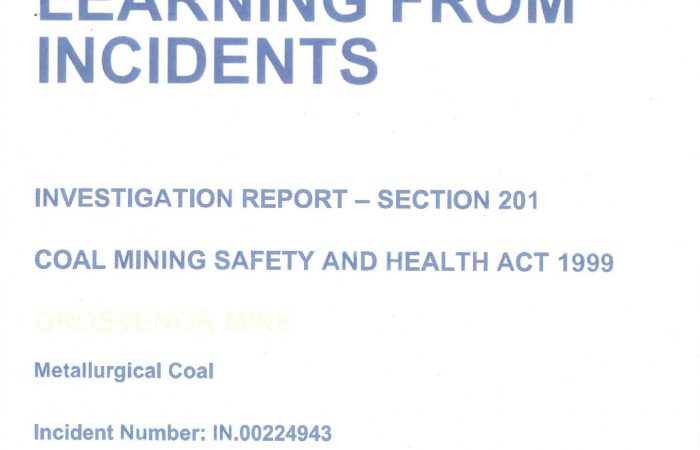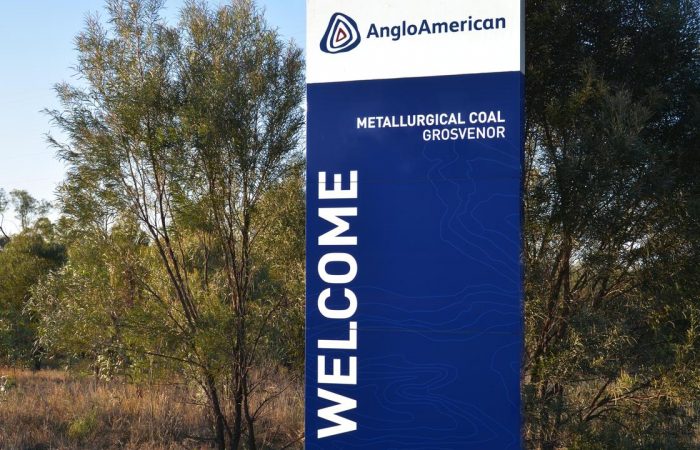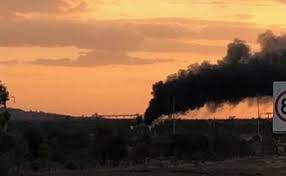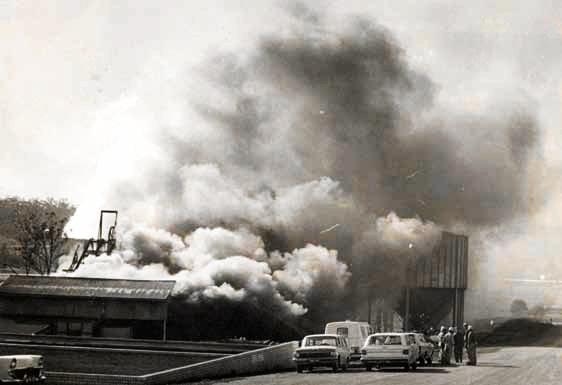
Grosvenor LFI Longwall LW 104 Face Ignition Severely Burning 5 Workers. Some points to note
I have collated a number of points from the Anglo LFI up till the time of the ignition.
Grosvenor LFI 6 May extracts (AutoRecovered)
Of course if all the LFI’s from Grosvenor Mine related to the events of 2020 were publicly available would be of assistance.
From the Methane HPI table on page 13 there are TWO DISTINCT TYPES OF EVENTS.
THOSE IN RED COMING FROM FACE or FLOOR. S243 Sensor in the Tailgate does not change
THOSE IN BLUE COMING AT TAILGATE END OF ROADWAY FROM GAS MIGRATION FROM GOAF. The 400m and Outbye Sensor quantities at no stage go near 2%.
21/04/2020. 5% Explosive
| Time of
Exceedance |
s243(a) Sensor (“149 Sensor”) | Tailgate Sensor — 400m outbye
(“Inbye Sensor”) |
Tailgate Sensor — 3-4 c/t
(“Outbye Sensor”) |
|
| 18/03/2020 | 21:33 | 0.97% | 2.56% | 2.3% |
| 19/03/2020 | 06:50 | 0.94% | 3.01% | |
| 20/03/2020 | 02:30 | 0.81% | 2.84% | 2.57% |
| 20/03/2020 | 03:30 | 0.85% | 2.55% | 2.1% |
| 20/03/2020 | 14:36 | 0.99% | 3.55% | 3.1% |
| 22/03/2020 | 22:22 | 1.08% | 2.54% | 2.54% |
| 23/03/2020 | 06:28 | 0.8% | 1.99% | 2.55% |
| 04/04/2020 | 02:22 | 2.97% | 1.34% | 1.87% |
| 06/04/2020 | 23:31 | 1.36% | 2.12% | 2Æ6% |
| 07/04/2020 | 14:21 | 1.1% | 2.04% | 2.52% |
| 21/04/2020 | 00:58 | 3.08% | 1.48% | 1.49% |
| 21/04/2020 | 01:54 | 2.55% | 1.66% | 1.49% |
| 21/04/2020 | 13:06 | 2.66% | 1.6% | 1.42% |
| 21/04/2020 | 23:06 | 5.04% | 1.47% | 1.38% |
The LFI has been listing events in chronological order, which needs examination without the video of the Face Ignition that Anglo Investigation Team has viewed.
They list the pressure changes in # 9 Shaft occurring after the events on the face, which would be correct.
The methane sensors both the 243 and the 400m sensor are recorded as reading excess methane and tripping power, after the pressure changes at # 9 shaft
This indicates power was still on up until this point.
This logically must be correct or power should have dropped off the face Cameras and there would not be a video of events.
Up until power is dropped off the face all the Electrical Components are powered and the AFC is running.
So up until power drops there is a potential electrical source of ignition as well as the AFC which had just gone through extensive repairs.
CAMERAS
I note that there is no mention of the Tailgate camera during the visible events with the Ignition.
- Was the tailgate camera installed and operational at the time of ignition?
- If so, when did it stop recording/transmitting?
- If the tailgate camera was operational and then stopped, was it either a potential; source of ignition
Grosvenor LFI 6 May extracts (AutoRecovered)
DATE: 30/07/17 TIME: 13:30 LOCATION: MG101 Longwall MG corner
EQUIPMENT INVOLVED: Longwall AFC/BSL turnaround camera DAMAGE: Camera lens cracked
During production in Longwall, Electrician found the flameproof turnaround camera had a cracked lens. Equipment was isolated and reported immediately.
. – OTHER INFORMATION/DETAIL:
o Equipment isolated at time of incident,
o Incident reported to DNRM electrical inspector immediately,
o Inspection carried out and photographs taken,
o ICAM to complete identifying root cause and actions for re-establishing AFC/BSL turnaround camera
Andrew Self in his testimony made this observation about flameproof devices and enclosures.
TRA.500.021.0056
Q Are you content with those two propositions?
A I think “content” is a bit strong. On the static electricity, I think “content” – in my own mind, I can never rule out electrical. That’s not just based on prejudice against electricity. There are many reasons not to trust electrical systems in underground coal mines. I’ve done work in the past where the – do people understand the flameproof system?
Q You explain it.
A. A flameproof system is, generally speaking, an enclosure where the electrical components are inside the enclosure. An explosible mixture cannot access the electrical components inside the enclosure. If there was an ignition inside an enclosure, then it would be contained within that enclosure. A lot of work I do – not a lot – a proportion of the work I do is to do with preventing explosions, and one of the first things in terms of ignition sources that you look at is electrical, because it has been the ignition source in so many cases in history.
The number of occurrences of a breach of flameproofing absolutely shocks me. In my operational career I always believed flameproofing was 100 per cent reliable, and I’ve discovered in the past 20 years or so that that’s not the case. An engineer put it to me and said, “It’s an engineering system; it will fail at some time.” So I find it really difficult to rule out electrical 100 per cent.
Q In the cases you’ve spoken about where flameproofing was found not to have worked, was there in fact evidence that showed where the ignition source had come from?
A I believe not.
Q So how was it determined that flameproofing had failed in those cases?
A. In the past where I’ve found these cases, people have identified it in routine inspections, that kind of thing, but I’ve seen cases where there’s been a flameproof breach.
Obviously I’m not going to name any names, but the component was not a flameproof component at all, and yet the thing had been through the manufacturer’s compliance testing, had been through the introduction to site, it had been through the introduction to underground, it had been through its codes periodically underground and not been detecting six months, and it horrifies me.



Stuart,
This article only reflects the serious concerns people are having regarding the inquiry and its scope to cover the broad range of topics not yet delved into.
The question needs to be asked at what point were management going to recognise the serious situation that they were in the middle of and put a plan in place.
It seems the scenario is similar to a frog in hot water.
You would like to think there was a strategy that mine management were working to, if they were it needs to be bought out through the inquiry, so it can be analysed and hopefully show that management were actually managing the mine, and not just hoping there prayers come true.
Coal Hog;
I wholeheartedly agree. Well put.
That is only questions that at least some Inspectors and a few more not as yet public documents such as Anglo Grosvenor’s LFI for the Withdrawal from Mine and Ignition of Gas LW104 Incident Date: 8 June 2020 could shed some light on.
Since no one from Anglo will give written or public evidence these Inspectors Statements and other not yet public documents are all we have to go on